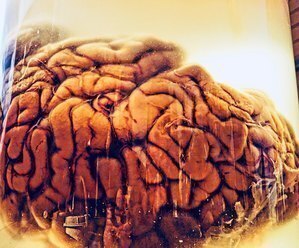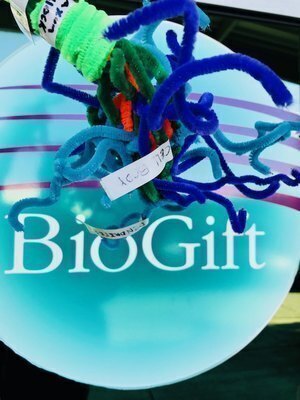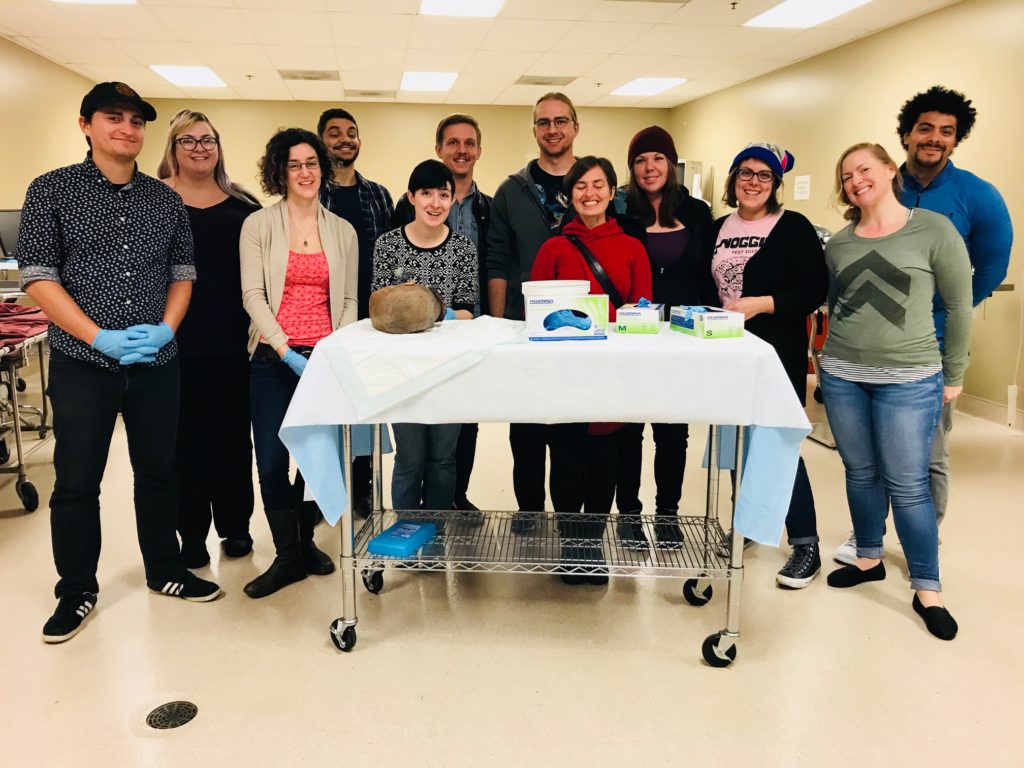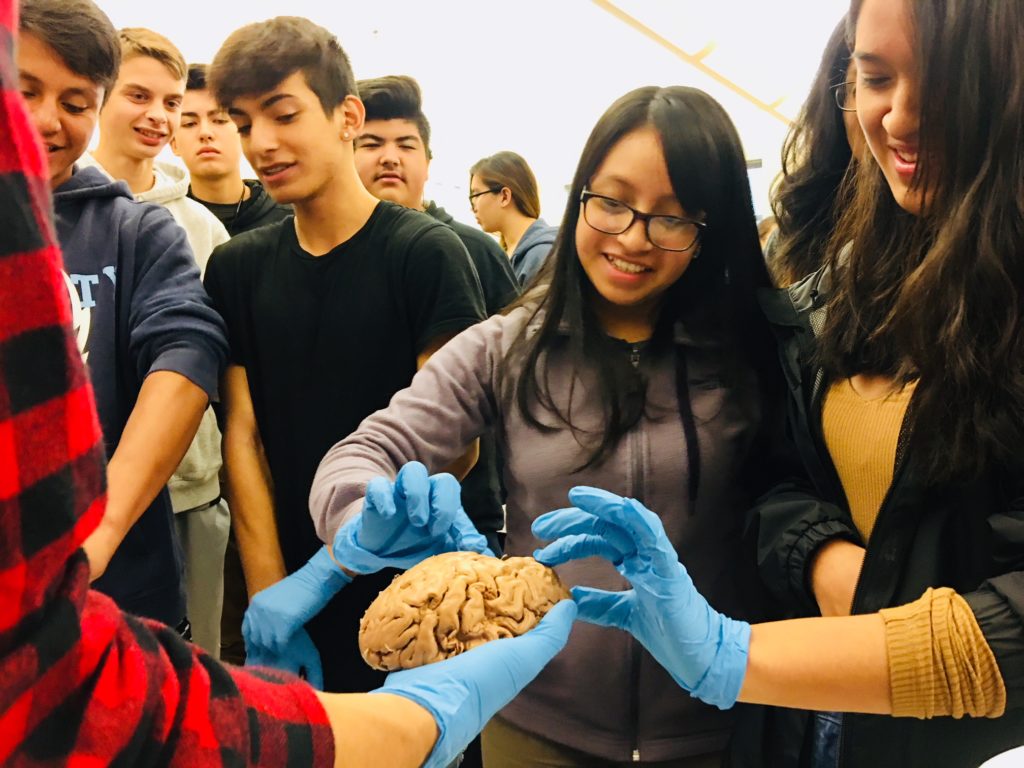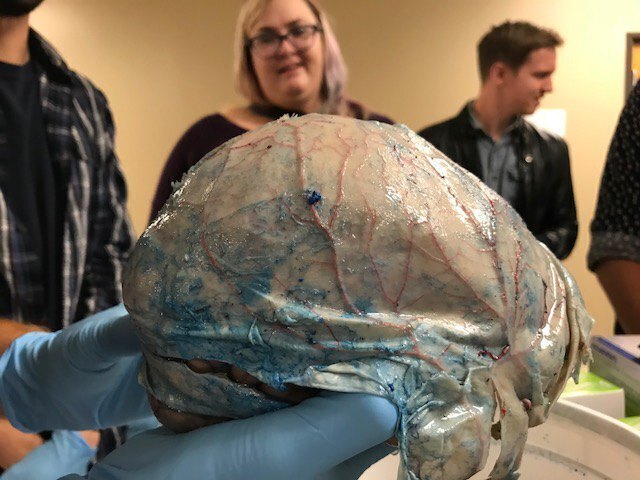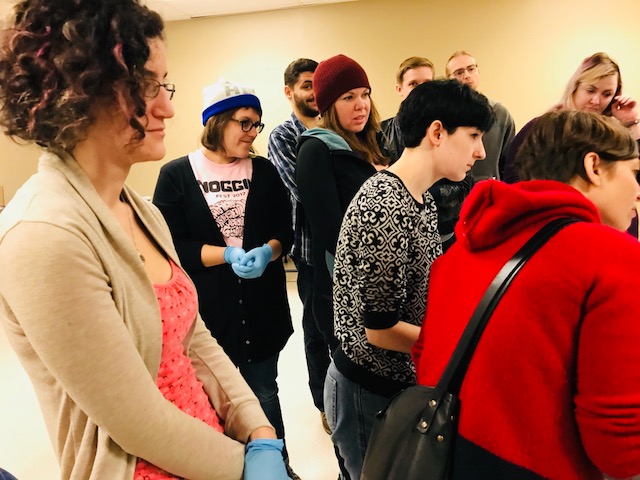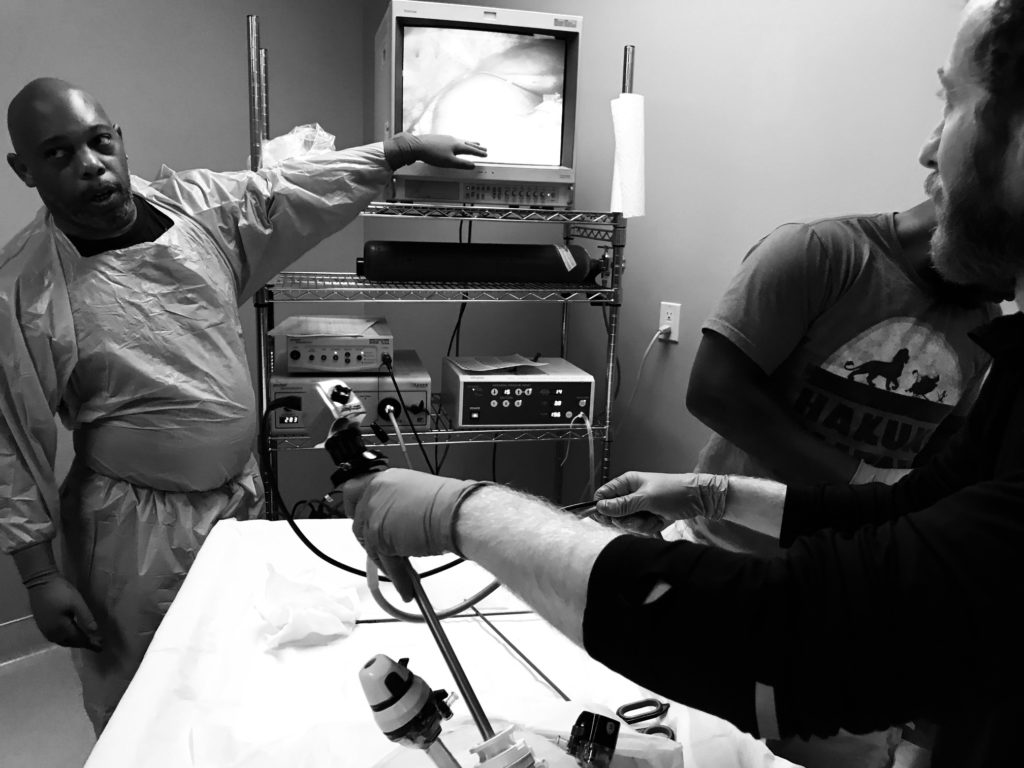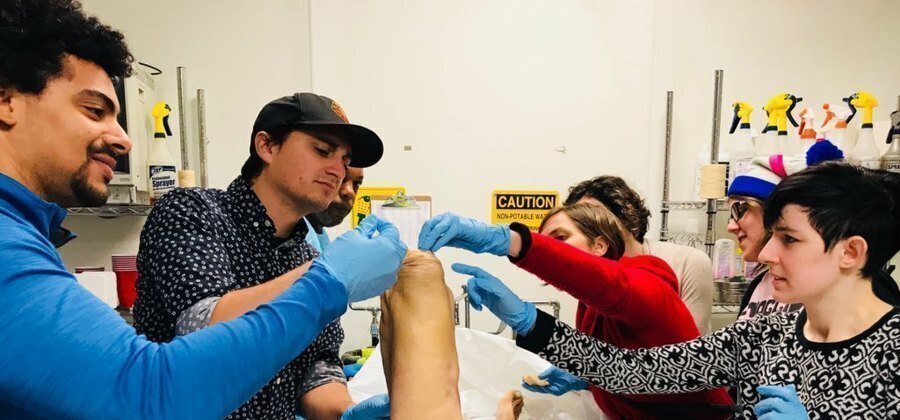“You ask the world, and the world says no
It’s the world’s refrain, mine says go…”
-John Gorka
Our outreach office, and our pipe cleaners, air dry clay, sheep brains, cerebral jello molds, EEG electrodes – were once kept in a closet behind two locked doors. The tiny hidden cubicle was meant to house four adjunct faculty. We taught at the suburban Vancouver branch campus of Washington State University where our classes were full, the pay was minimal, job status precarious, and benefits for art instructors utterly nonexistent. As in public schools under No Child Left Behind, funding for arts was cut, instructors were let go, and a new university President reduced services for multicultural students and the Office of Equity and Diversity. Yet one football coach was the highest paid public employee in the state, earning over $3 million annually (this rose to $4 million!) (before he was – finally – fired for refusing COVID vaccination), and 140+ employees made more than $200,000/year.

“There is no money,” was the refrain from comfortable administrators…
“Don’t want to waste what I have to give
In all of the time that I’ve left to live
Don’t want to waste what I have to give
In any of the time that I’ve got left”
-John Gorka
We developed an arts-integrated neuroscience class, the first cross-disciplinary STEAM course in the state system, which thrilled, engaged and attracted many curious undergraduates. We created research-based art while exploring the brain’s sensory and perceptual systems, asked questions, learned plenty, created messes, visited art museums, homeless youth shelters, symphonies and public schools with our knowledgeable students, extra cerebrums and bendable pipe cleaners. We inspired, informed, learned from and educated others – and had fun!
“I can do more than I thought I could
Work brings more luck than knocking on wood
There’s random bad and random good
Work brings more good luck”
-John Gorka
LEARN MORE: From Crimson & Gray
Brains on Tour – NW Noggin shares its enthusiasm for science with K – 12 students.
And yes, a newly tenured faculty member (and purported “#scitalk” expert) insisted on “white walls” without “clutter or art,” most students were drilled in rote elevator pitches as the ideal for communicating science, the pre-“me too” Chair of the Psychology department traumatized undergraduates by actually threatening to drive up “dressed as a pimp” (!!) if more than fifty attended a Psychology Club event, the institution deliberately underpaid adjunct instructors (and got caught), and each moment of a course had to incorporate new academic goals and subgoals promoted by “education” professionals in a language that few people care about or understand. There was more administration, and less teaching – and less creativity, spontaneity, exploration, innovation, messiness, meaningful engagement or art…
LEARN MORE: Demand for admin pay cuts grows
LEARN MORE: Why don’t teachers use education research in teaching?
“…we would like to underscore
That we appreciate you
Every day, in every way,
Other than the monetary.
If you need to contact us with questions,
We will be free as soon as we hire
A few new deans
And found a new office.
Sincerely,
Your university’s upper-level administrators,
Who appreciate not only you,
But the fact that we make more money than you”
LEARN MORE: Noggin @ White House Frontiers
Since then we’ve found greater institutional support in more diverse, less centralized educational environments, where vibrant networks of pipe cleaner neurons are celebrated and welcome, and outreach offices are unlocked and accessible to students and the public…
LEARN MORE: The Art and Science of the Brain – NW Noggin makes neuroscience fun
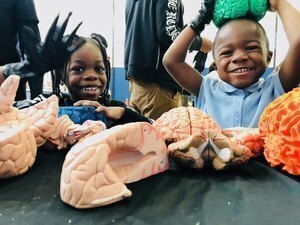
LEARN MORE: Serving 700 students at SfN!
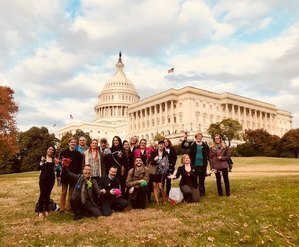
LEARN MORE: From classrooms to Congress!
And we’ve gotten more novel and creative in supplementing and replacing essential educational materials we rely on for our free visits to academic priority classrooms around the Pacific Northwest. Some of the human brains we previously brought to schools and public venues remain locked away in laboratories, inspiring no one, while we’ve connected our university volunteers with extraordinary community organizations that are thrilled to support educational outreach…
“I tell my students, ‘When you get these jobs that you have been so brilliantly trained for, just remember that your real job is that if you are free, you need to free somebody else. If you have some power, then your job is to empower somebody else. This is not just a grab-bag candy game.” –Toni Morrison
LEARN MORE: A BioGift of Brains
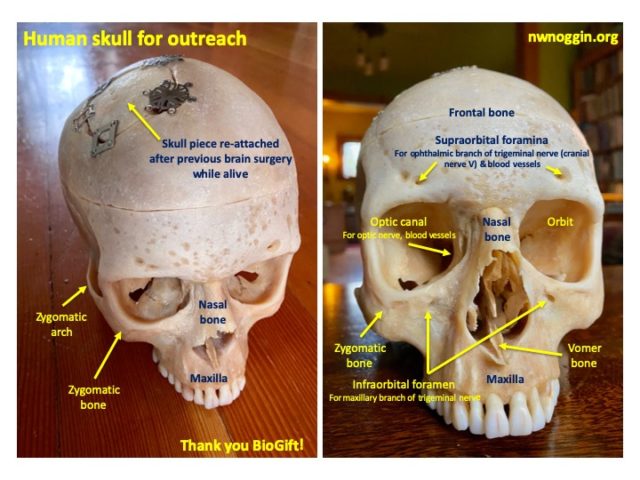
This week we gathered a brainy crowd of informed, eager volunteers, including Jordan Ray, Gaile Parker, Ali Mack, Jesse Hamlin, Aliese Poole, Jobe Ritchie, Heather Hamilton and Leota Wolford from Portland State University, Brittany Alperin and NW Noggin Resource Council member Jessica Patching-Bunch (both from OHSU), Jarrett Skinner, and Resource Council member Joey Seuferling…
We were excited to re-visit the fascinating labs at BioGift Anatomical, a whole body donation and surgical education center in Portland. Andrew Hardy, the Business Manager, was a former student of teacher Ramona Toth at Liberty High School, which we’d visited last week…
LEARN MORE: A BioGift of Brains
LEARN MORE: Brain Lessons at Liberty
LEARN MORE: Lab Coats & Lobes @ Liberty!
Andrew is also skilled at dissection, working alongside the father and son lab coordinator team of Michael and Miguel Pierre, who generously offered to provide yet another new human brain for our non-profit multi-institutional outreach!
The dura mater – the “tough mother” membrane covering the brain and spinal cord
LEARN MORE: Meninges
I need to pause here to warn readers of the graphic nature of a few photos below. Please proceed only if you’re up to considering cadaver dissection, as our Noggin volunteers were offered another unique opportunity to see, and feel, anatomy up close…
We were able to directly examine human heads, for example, with the latex paint used to color the vasculature dripping dramatically from the common carotid arteries (in red) and jugular veins (blue). This will allow us to clearly point out the branches of important arteries supporting critical neural networks throughout the central nervous system…
The basilar artery runs along the ventral surface of the brainstem
LEARN MORE: The Blood Supply of the Brain and Spinal Cord
Andrew also expertly “scoped” the viscera, allowing for clear, brightly lit images of internal organs that let BioGift prepare appropriate cadavers for surgical training courses. There is great value in these body donations, for medical education and science outreach. You don’t want a surgeon replacing your knee, for example, without first practicing on a cadaver..!
Our students were utterly fascinated, quickly donned nitrile gloves, asked many questions and began acquiring new knowledge only attainable from this kind of visceral, hands on experience. We were shown another recent cadaver, and Noggin volunteers were offered opportunities to examine tissue more closely…
Our outreach volunteers had many reactions to this experience…
From Brittany Alperin: “I started trying to put myself in the mortician’s shoes. How do they do this every day? How do you normalize cutting up a human and shipping out the body parts? It got me thinking about this idea of duality. The body versus the mind. I imagine it becomes easier to do this type of work when you think about the body as just that, a body, with nothing attached. Once the person dies, there’s nothing left but a sack of meat, and we cut up meat with no problem so why would this be any different. It really doesn’t leave any room for having any other belief. You definitely would not be able to do this if you felt the body and spirit were connected in some way after death and I’m sure this experience would be very disturbing for someone who held onto those beliefs. This was why I asked if they had rituals that they did, something to ease their mind, something to honor the person, which they did, and I really appreciated that.”
From Jarrett Skinner: “What a strange and incredible opportunity to join NW Noggin on their trip to Biogift. Andrew and the rest of the group were very informative, and I learned a lot about an industry I never knew existed. Seeing the cadavers was a surreal experience for me. Being able to learn about the body in a macabre yet hands on setting left little to the imagination. Overall I had a wonderful and humbling experience with the Biogift team. Thank you NW Noggin for a unique visit just in time for Halloween.”
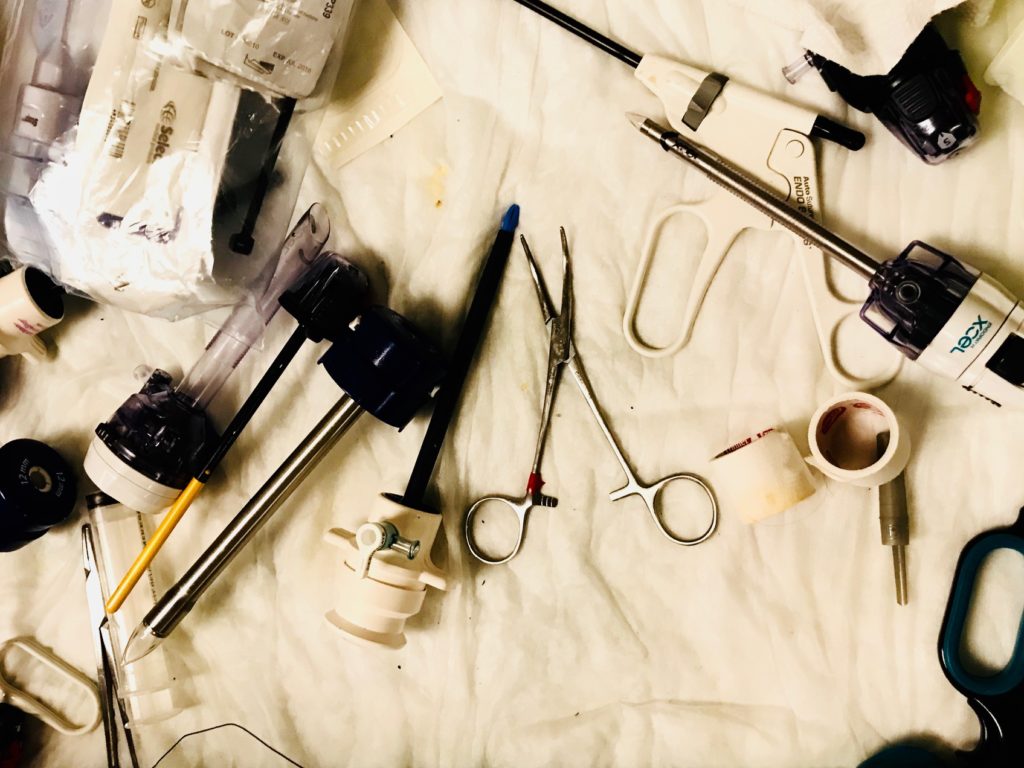
From Leota Wolford: “I was amazed and felt so much gratitude to be able to get a close up, inside look at and palpate a real glenohumeral joint. It’s a rare opportunity to feel actual synovial fluid. I have a much more visceral understanding of the shoulder now, which will benefit me greatly as a massage therapist…and all of my future clients.”

From Jessica Patching-Bunch: “Thank you to the folks at BioGift for welcoming us back with new and enthusiastic volunteers. Although this was not my first experience witnessing the behind the scenes process of anatomical donation, it was still an awe inspiring visit that left me with with an array of feelings. After leaving Biogift on each occasion, it has taken some time to process the experience and the feelings of appreciation for and interest in anatomy coupled with the unsettling feelings of seeing a human body dismantled piece by piece. It is an amazing thing to gift your body to the advancement of medicine and science and an amazing opportunity for all of us to learn about the human body through this work.”

From Ali Mack: “Seeing the cadavers laid out in front of us was kind of magical, but also really powerful… when you think about it, even though they’ve passed away, they’re still in an incredibly vulnerable state, and they’ve donated their entire being so that you can learn from them directly. Muscles, cut off clothing, basic things that you take for granted really made the dead almost seem more alive than we were. Death doesn’t really frighten me, but not knowing what kinds of sounds would come from the body as they made incisions did kind of freak me out…. But I was pretty amazed that other than a couple of popping sounds, there weren’t really any loud or scary sounds coming from the neck or limbs. The whole experience was seriously one of the greatest things I’ve ever experienced and really makes me want to donate my body to science when I die so that others can study and learn and experience from my being after I’m gone.”

From Gaile Parker: “It was a really great experience! I think my favorite part was watching how the paint is put in to show our vasculature. It was a perfect mix of biology and art to me. I feel like now I’m armed with a lot more answers for students when they ask about donors. I also feel like I have a lot of Chuck Palahniuk-esque facts and stories. I appreciate the opportunity and all who made it possible.”
We spent memorable hours at BioGift learning and exploring, and absorbing understanding, knowledge and insight from Michael, Miguel and Andrew into how our bodies look, feel and function. We remain awestruck by the experience, and it has made us more effective educators, and storytellers – and we are grateful for the generosity of those who donate their bodies to clinical and basic research, education and outreach…
LEARN MORE: Donating Your Body To Science
This is one of those community partnerships we are so excited to form, as it links our university volunteers with each other, with K-12 students they visit in public schools, and with essential area services and careers. We are thankful for our collaborators who go beyond “#scitalk,” and support outreach that educates, informs, motivates, advances, allows for messy exploration and fascinates absolutely everyone involved…
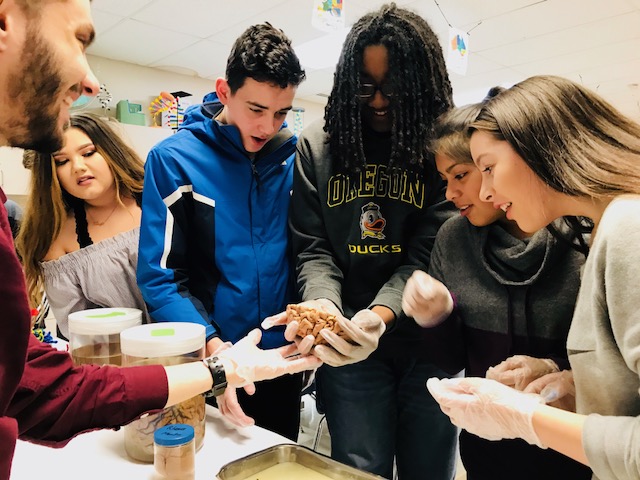
“I’m not going to school just for the academics – I wanted to share ideas, to be around people who are passionate about learning.” -Emma Watson
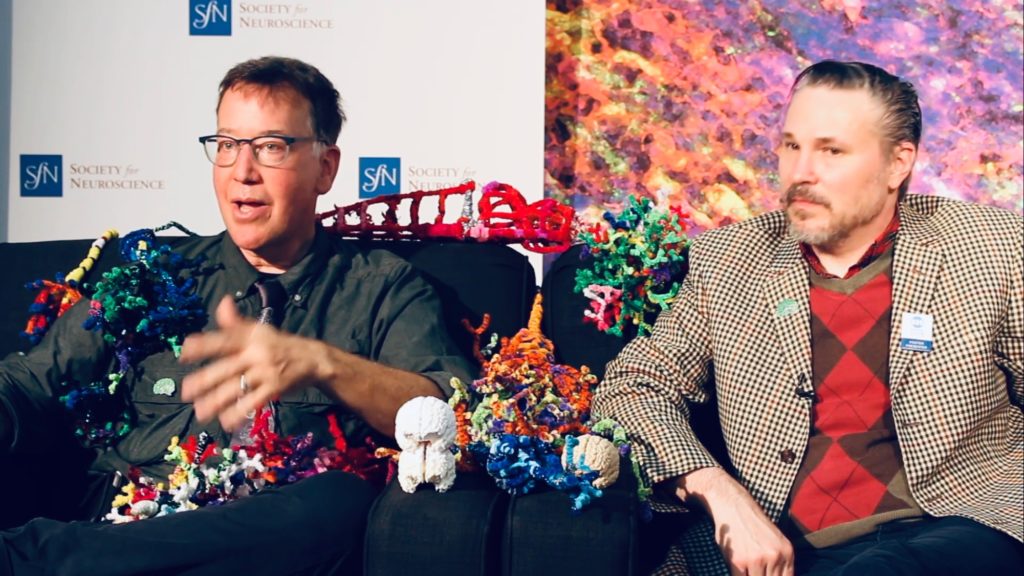
“So glad to work with institutions that support innovative teaching and outreach!”





